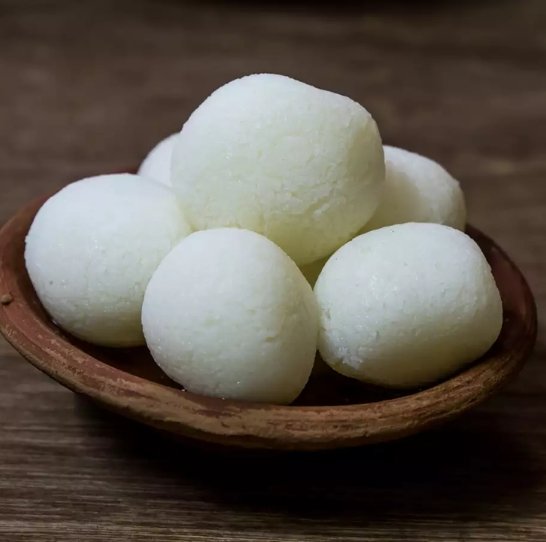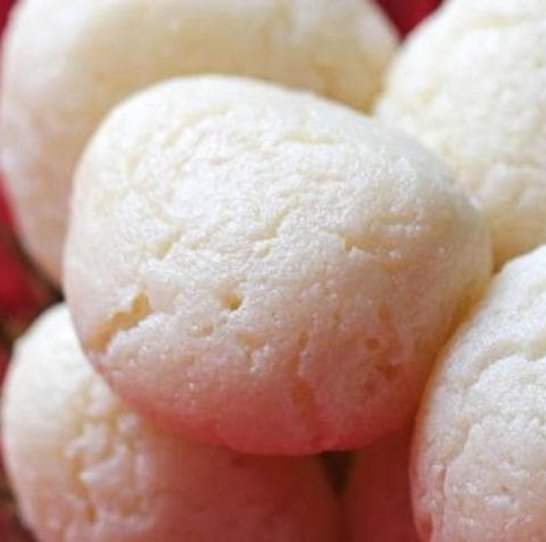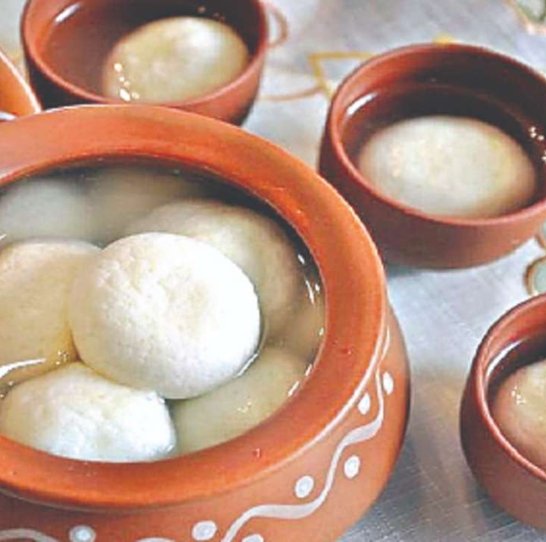
Odisha rasagola
Odisha Rasagola is a soft, juicy and spongy sweet originating from Odisha, India. It is known for its unique texture and cultural significance and is made according to special recipes and techniques that distinguish it from other types of rasagola. The sweet is closely associated with the traditions of the Jagannath temple in Puri and has been granted Geographical Indication (GI) status.
- Made from tender chhena (cream cheese), suji (semolina), maida (refined wheat flour), cardamom powder, milk and sugar.
- Chhena is made from the milk of local cows from Odisha without removing the cream, which gives it a softer consistency.
- The kneading process, called “chhena chakata”,” ensures that the chhena is soft and the fabric breaks down to give a smooth texture.
- The natural, creamy colour is created by mixing fresh and stored sugar syrup in a ratio of 60:40 and caramelising it during cooking. No artificial colourings are used.
- It is known for being soft, juicy, easy to swallow and less chewy than other rasagolas.


- Traditionally offered to Devi Lakshmi at the Jagannath temple in Puri and mentioned in the 15th century Odia literature by Balaram Das.
- The granting of geographical indication status ensures that only rasagolas produced in Odisha according to certain procedures can be labelled as “Odisha Rasagola”
- Quality control is monitored by the Odisha Small Industries Corporation Ltd (OSIC) and Utkal Mistanna Byabasayee Samiti, with strict standards for hygiene and production procedures.
- Producers must comply with the Food Safety & Standards Act, 2005, and ensure that no child labour is used in production.
- A report on the impact of GI registration and promotional activities is submitted to the GI register.